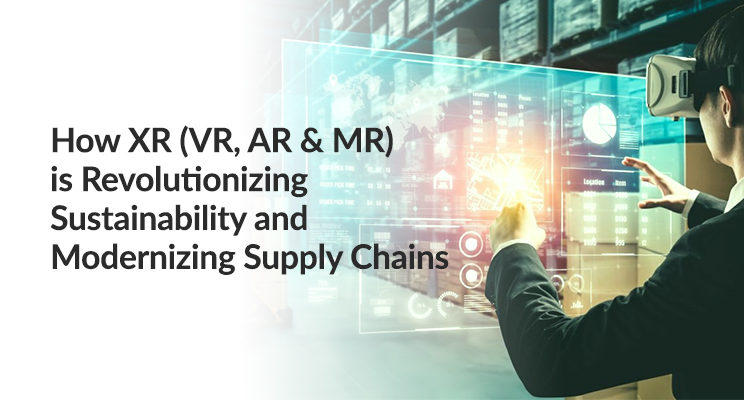Introduction
Addressing sustainability in the production of high performance XR headsets requires a holistic strategy that encompasses material sourcing, circular economy design, rigorous supplier audits, and efficient end-of-life recycling models[1][2]. Manufacturers and policymakers need to integrate environmentally responsible practices while ensuring that supply chains remain resilient and efficient, reducing the carbon footprint associated with production and disposal processes[3].
Material Sourcing and Circular Product Design
For XR headsets, selecting sustainable, high-performance materials is vital to minimize both environmental and social impacts. Designers should prioritize materials that incorporate recycled content along with the potential to be easily recovered and reused at the end of life, as this approach not only reduces the need for virgin materials but also supports a circular economy model[1]. In addition, engineers play a crucial role by integrating repairability and upgradability into product designs, fostering longer product lifecycles that allow for refurbishment and component reuse[6]. XR device manufacturers can also work on modular design strategies that simplify the disassembly of headsets to effectively separate and recover valuable materials, ensuring resource efficiency throughout the product's life cycle[10].
Leveraging XR Technology for Supply Chain Optimization
XR technologies themselves can contribute to optimizing supply chains by using digital twins and immersive simulations to model logistics, forecast demand, and plan production processes, thereby reducing waste and improving resource allocation[2]. By integrating these digital approaches, manufacturers can simulate various production scenarios to identify inefficiencies and determine how to best streamline their operations, ensuring that inherent resource use is minimized while overall product performance improves[8].
Supplier Audits and Sustainability Assessments
Implementing robust supplier audits is essential to ensuring that every element of the supply chain adheres to strict sustainability and ethical standards. Companies such as Valmet and SGS demonstrate the benefits of conducting regular sustainability audits that review environmental, social, and governance (ESG) criteria, including labor rights and safety measures, to mitigate potential risks throughout the supply chain[5][15]. These audits can be supported by digital platforms, as recommended by Ecovadis, to centralize documentation and standardize key performance indicators, ensuring transparency and accountability among suppliers[14]. By leveraging data-driven assessments, companies can build a resilient supplier network that supports high performance XR headsets while upholding sustainability commitments[9].
End-of-Life Recycling and Extended Producer Responsibility
Managing the end-of-life phase of XR headsets is integral to creating a sustainable supply chain model. Recycling and refurbishment processes not only reduce landfill waste but also conserve natural resources by recovering valuable materials from used devices[11]. Advanced methods, such as those detailed in recent academic research, advocate for the development of standardized recyclability models that quantify recovered material value and guide the design process for future products[12]. Extended Producer Responsibility (EPR) policies also play a key role by requiring manufacturers to establish take-back schemes that ensure returned products are processed in an environmentally sound manner, reducing the overall ecological footprint of production and disposal cycles[11].
Actionable Recommendations for Manufacturers
Manufacturers should adopt a multi-pronged strategy to enhance sustainability in the production of XR headsets. First, prioritize the use of recycled materials and design for ease of disassembly, repair, and component reuse, thereby extending product life cycles and supporting a circular economy model[1]. Second, invest in digital simulation technologies such as VR and AR to optimize supply chain logistics, assess potential waste, and identify efficiencies in the production process[2]. Third, institute regular supplier audits with well-defined ESG targets to ensure that all partners meet high standards of environmental and social responsibility[5].
Policy Recommendations for Policymakers
Policymakers should encourage and facilitate the transition towards sustainable supply chain models by providing incentives for manufacturers to invest in circular product design and sustainable material sourcing. Policies that support Extended Producer Responsibility can help to ensure that manufacturers bear the full environmental costs of production and disposal, thereby promoting more responsible behaviors across the industry[11]. In addition, regulatory frameworks should promote transparency through mandatory sustainability reporting and supplier audits, making it easier to trace and verify the environmental performance of every component throughout the supply chain[14]. Finally, collaboration between industry stakeholders, research institutions, and government bodies is essential to develop and implement best practices and technological innovations aimed at reducing the environmental footprint of XR devices[8].
Conclusion
A comprehensive approach to the sustainable production of high performance XR headsets involves aligning circular product design, stringent supplier audits, and effective end-of-life management strategies. By incorporating recycled materials, designing for disassembly and reuse, and leveraging digital tools to optimize supply chain operations, manufacturers can reduce environmental impacts while maintaining product excellence[10]. Furthermore, clear policy frameworks that encourage transparency and accountability will support industry-wide efforts to create supply chains that are not only efficient but also socially and environmentally responsible[15]. Through collaboration and a shared commitment to sustainability, both manufacturers and policymakers can drive meaningful changes that benefit the economy, society, and the environment.
Get more accurate answers with Super Pandi, upload files, personalized discovery feed, save searches and contribute to the PandiPedia.
Let's look at alternatives:
- Modify the query.
- Start a new thread.
- Remove sources (if manually added).









